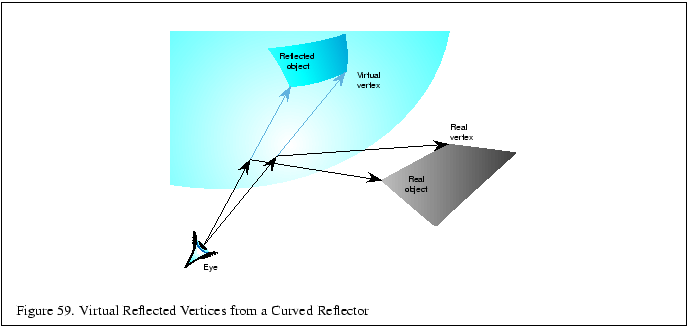
Since the objective with accelerated reflection is to find ``virtual'' vertices that appear to the viewer in the same place as an actual reflection, we can extend the planar technique to other reflection objects whose surface definitions are well-known.
For example, if our object is a sphere, the point on the sphere where a ray of light from vertex in our scene would reflect in order to reach the viewpoint can be computed directly [74]. Using the plane defined by that point and the normal to the sphere at that point, the real vertex can be reflected into a virtual vertex, as shown in Figure59 This reflection takes the place of the planar reflection transformation presented above, and is calculated for each reflected vertex rather than once per reflector.

The clip plane technique discussed for planar reflectors cannot be used directly for curved reflectors, although it may be acceptable to approximate the reflector surface for a single reflected face. The stencil masking and texture techniques, however, work well for this case.